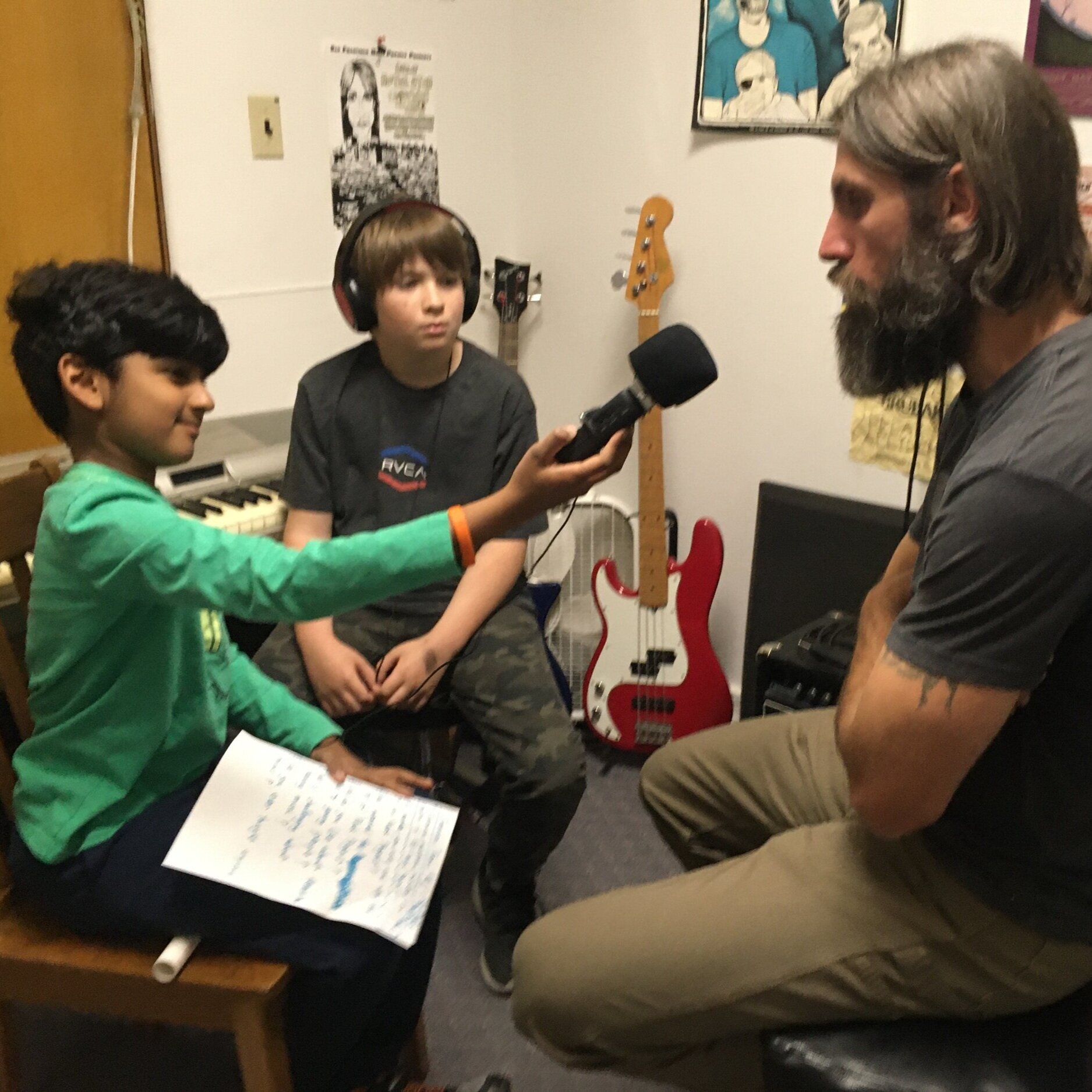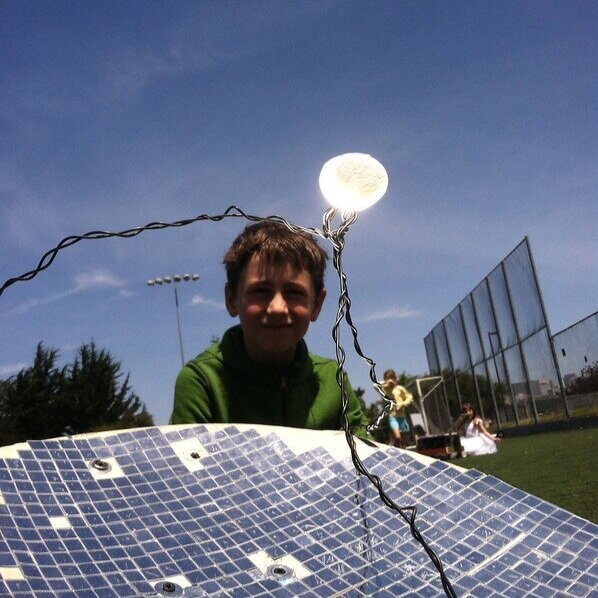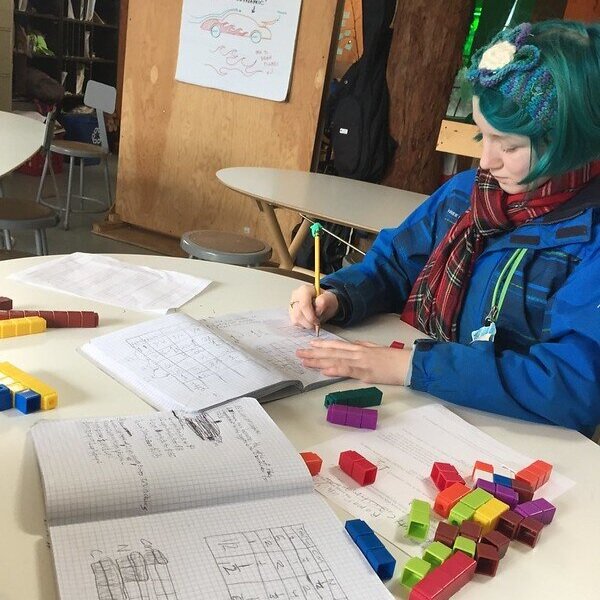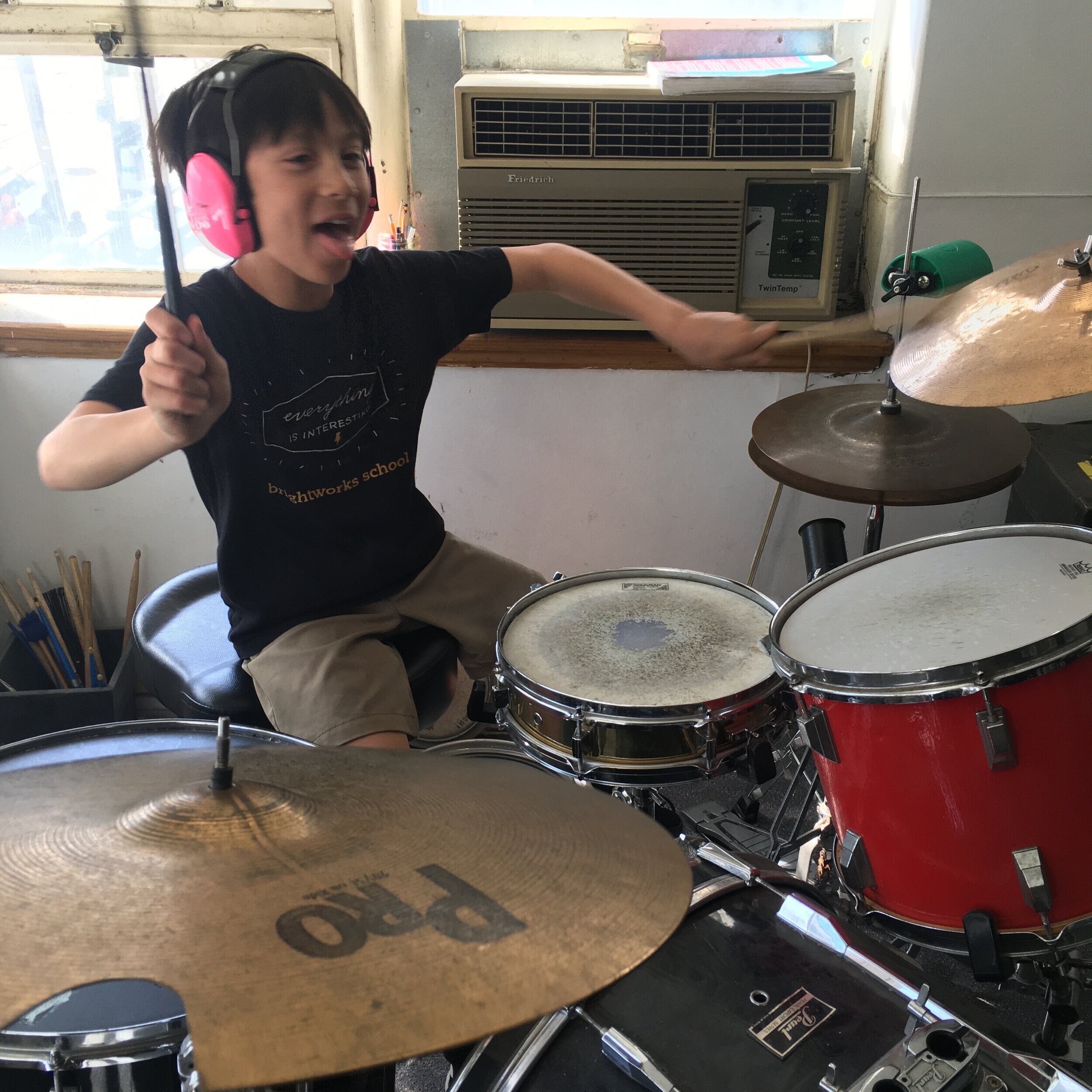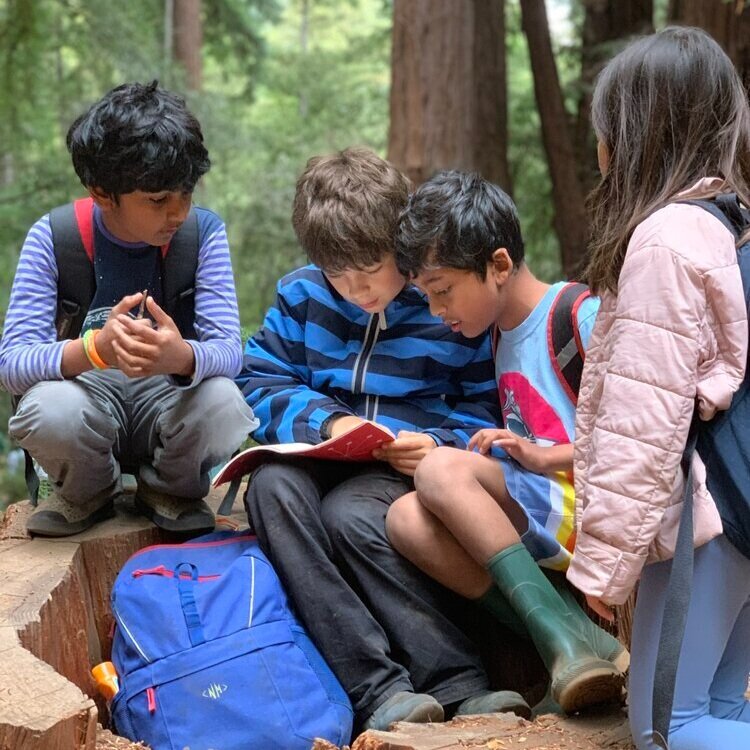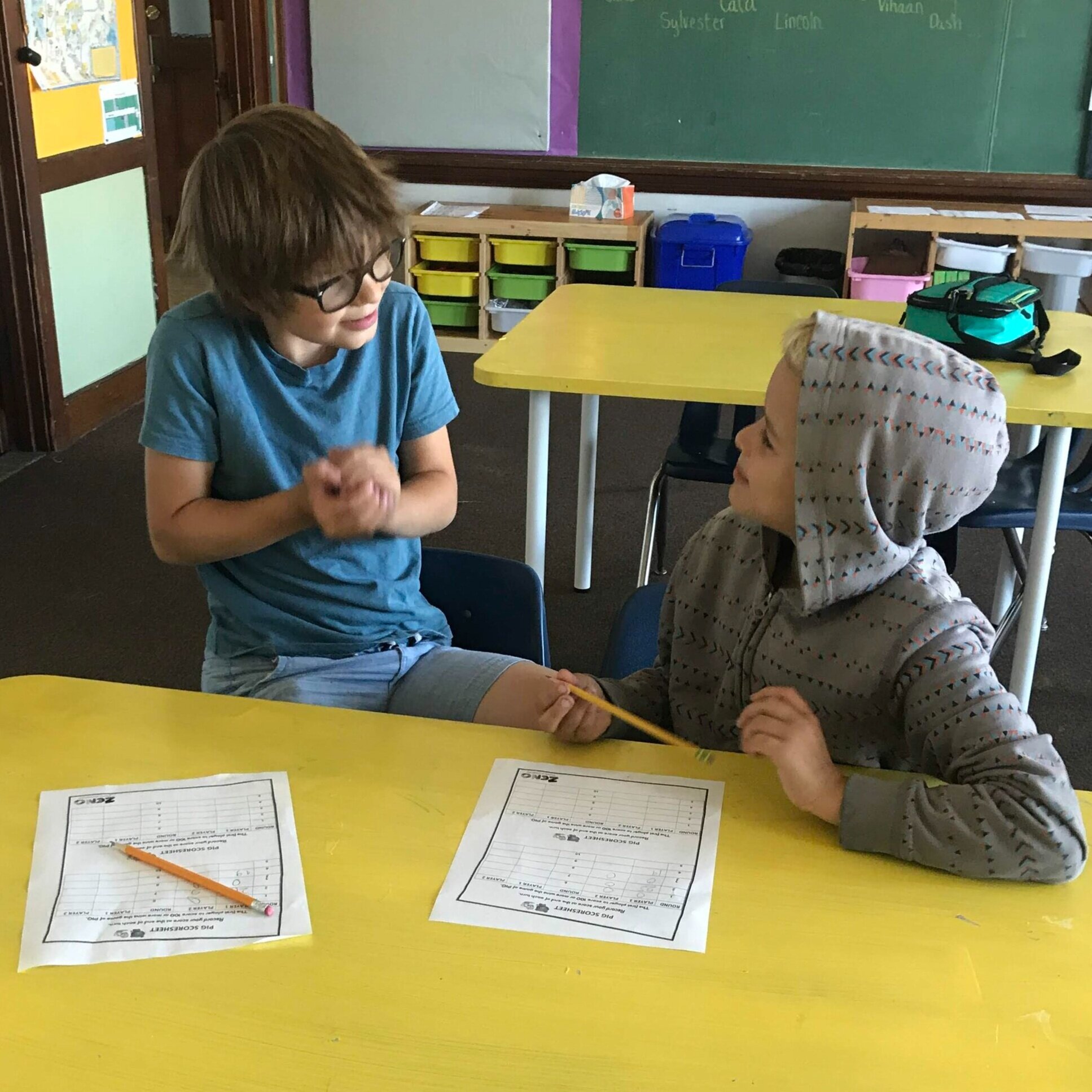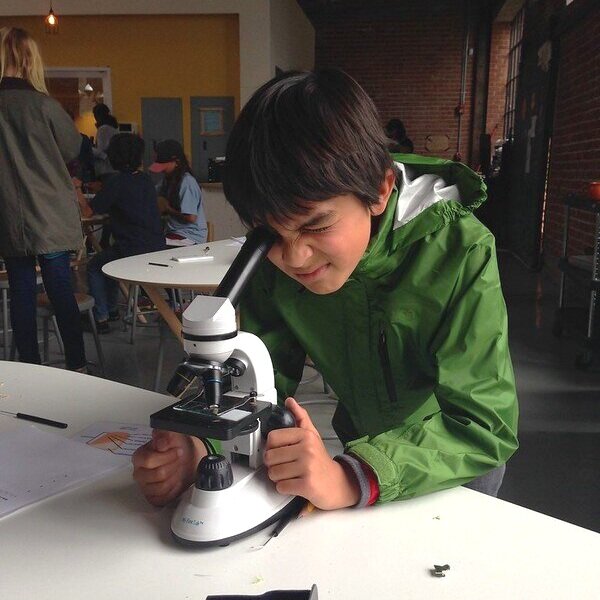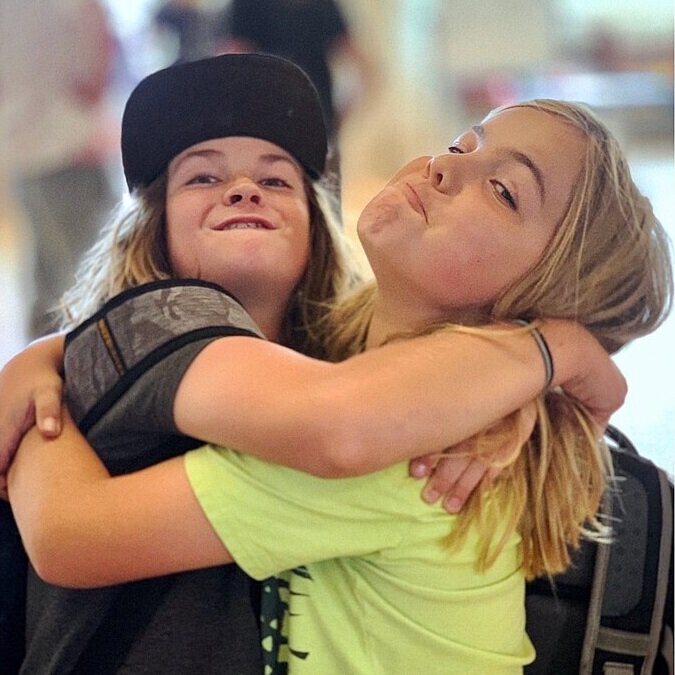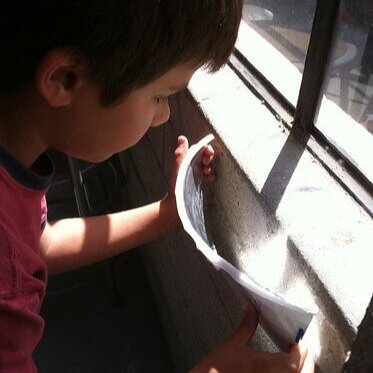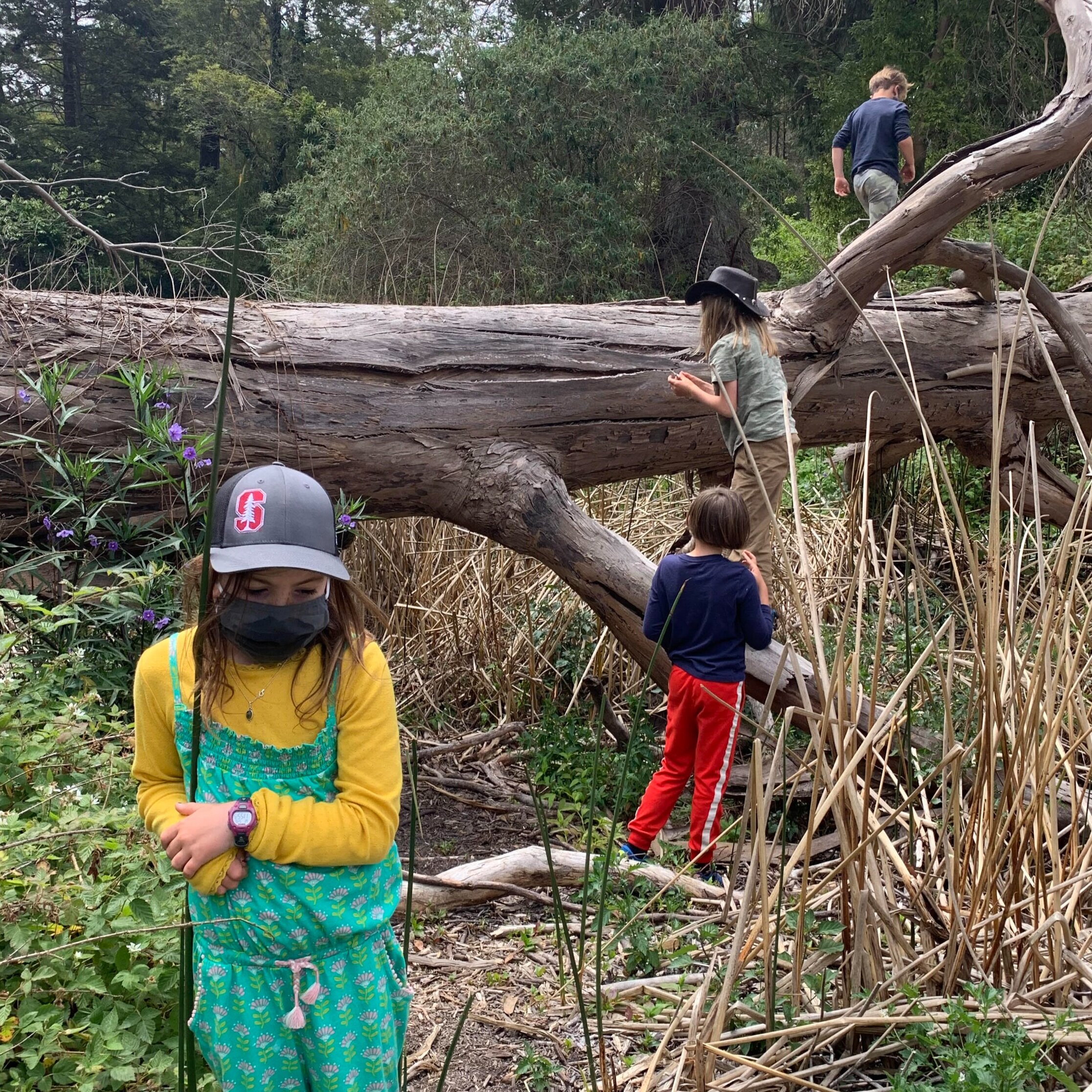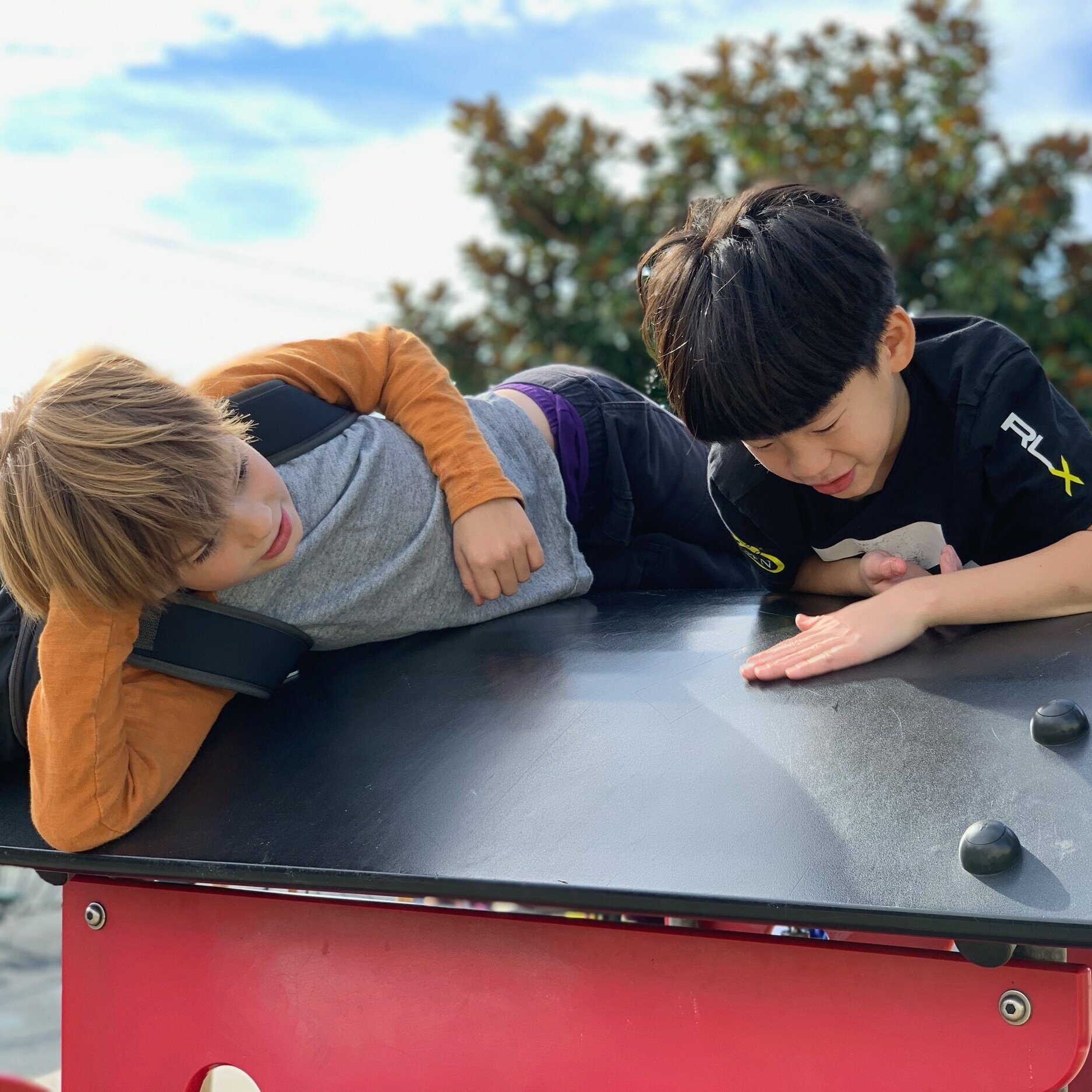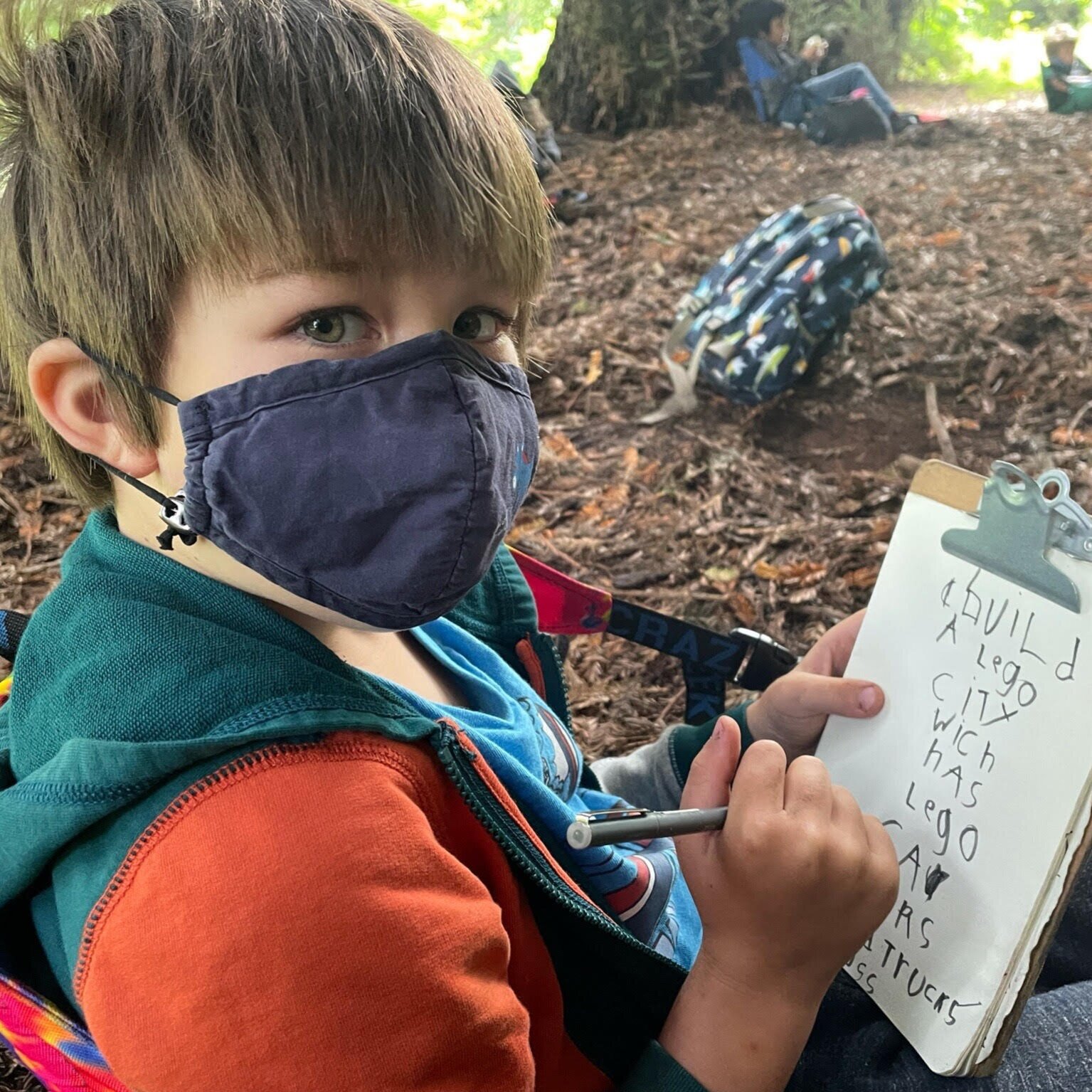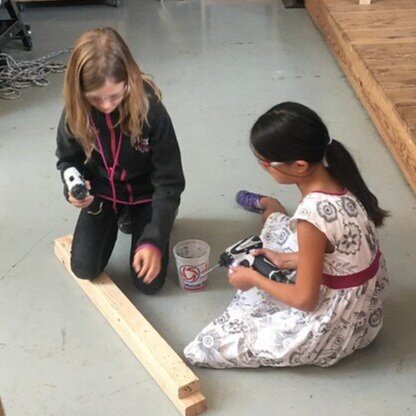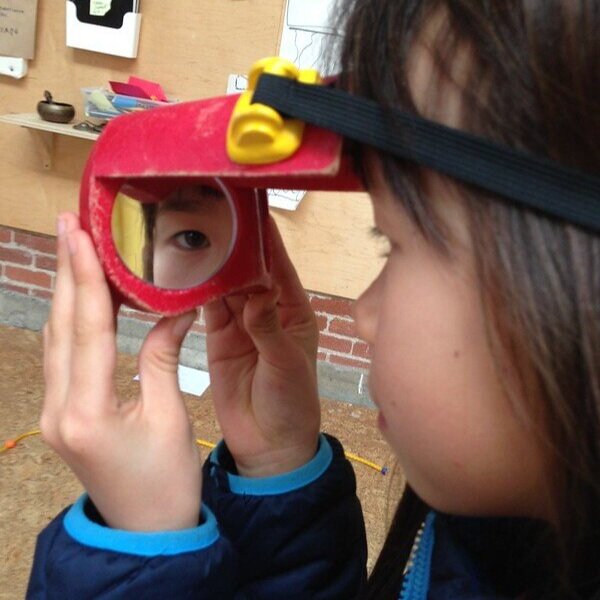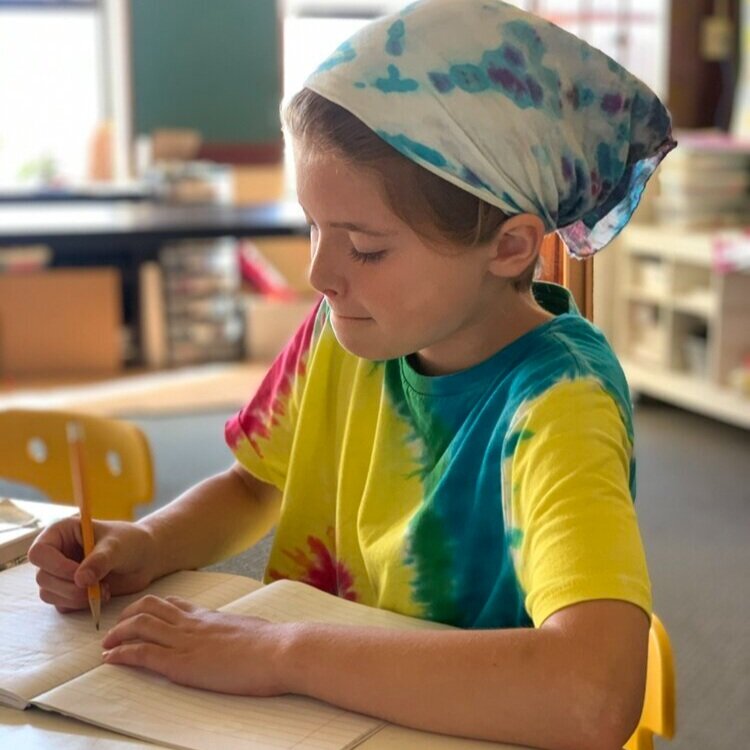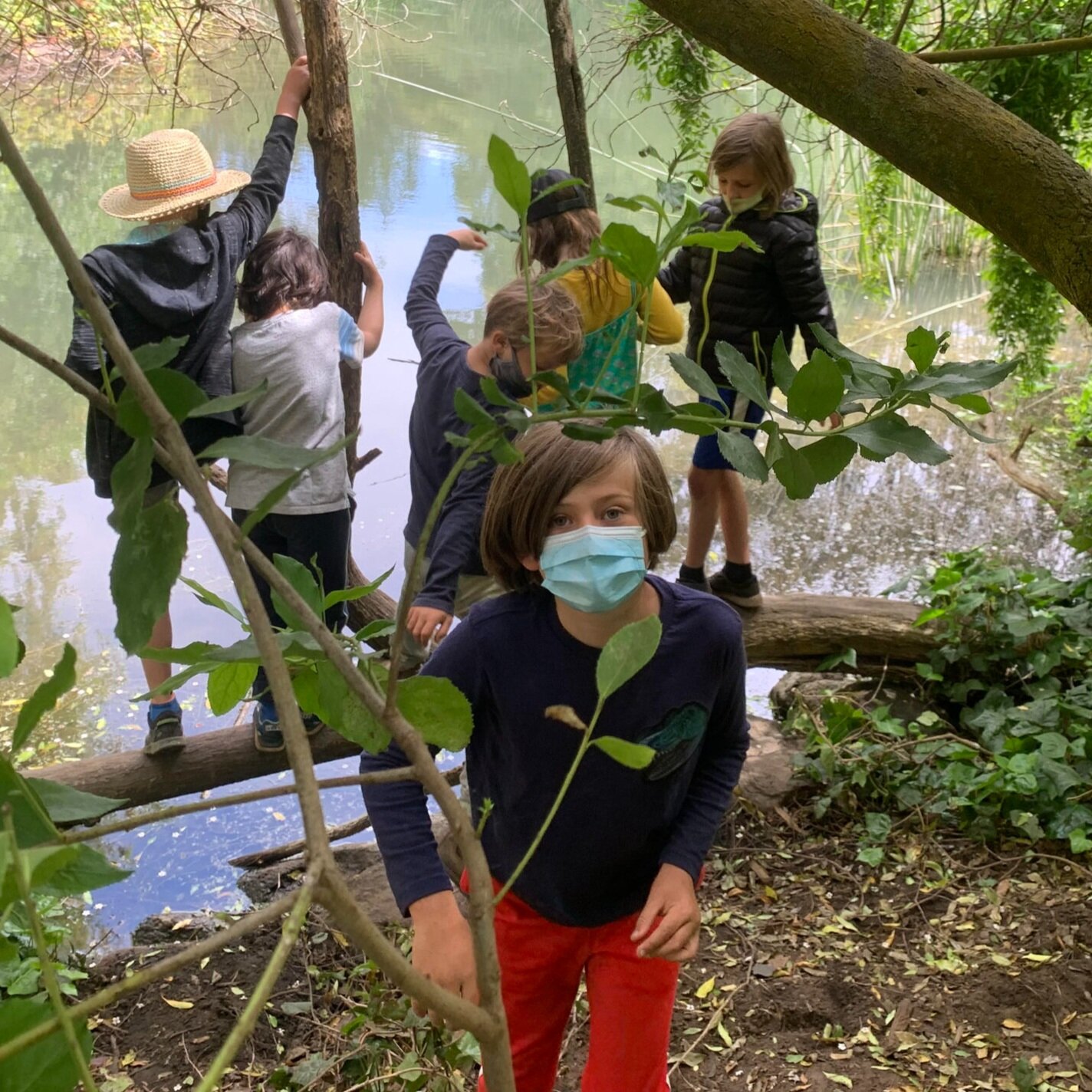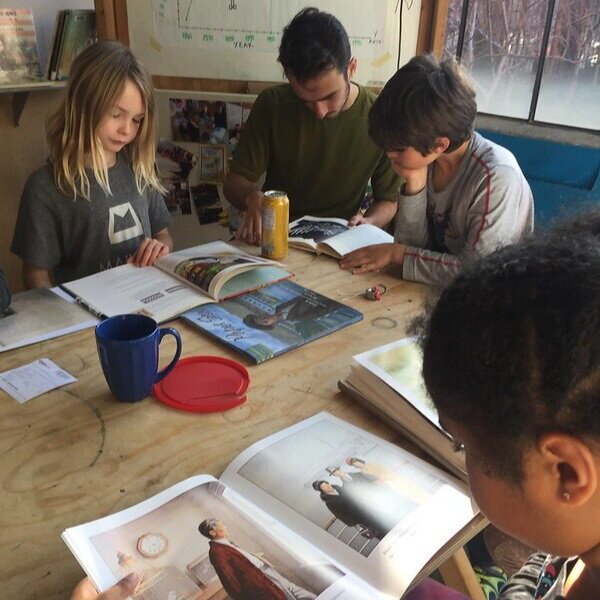Elementary
Whether building a massive sail-propelled rail car or designing clothing to keep themselves warm on a trip to the snow, our elementary students (3rd-5th grade) grow their capacity to manage their own work by furthering collaborator-facilitated, interest-based group projects. These projects provide opportunities for students to apply their academic learning and practice collaborative problem solving, growth mindset, iteration, project management and reflection.
Project-Based Learning
A Brightworks elementary school project grows out of the interest of the kids based on experiences and new ideas from the Exploration phase of the arc. Students explore, experiment, and play with ideas and topics and work together to represent their findings through a combination of writing, art, building, researching, making or other modes of expression.
Throughout the Expression phase, collaborators facilitate and encourage with new ideas, constraints, materials, and supports that allow students to build and think bigger than themselves. To help develop project management skills, they work with the kids to find reasonable scope, multiple steps, and opportunities for learning and exploration, helping to differentiate goals based on student learning needs and passion. They also work with students on reflecting on their learning, assessing their goals, and giving and receiving feedback.
The most vibrant projects are those that connect student interest to developmentally appropriate learning goals so that all students can contribute to the shared effort. Sometimes this looks like a whole group working on different aspects of the same thing, or individuals making similar things in parallel. Either way, collaboration and cooperation are key; ideas can grow when all in the group trust that their voices will be heard and honored.
Social Emotional Learning
It’s a powerful thing to be in a place where your ideas and the ideas of your peers are integrated into the curriculum and shape the fabric of your school days. This kind of freedom isn’t possible without a strong foundation of loving and nuanced communication. Brightworks builds students’ ability to navigate conflict, build empathy and identify and communicate their thoughts and emotions with kindness. Conflict resolution focuses on acknowledgement and legitimacy of emotions, and on repair and restorative justice between students.
Our days are built around group meetings, school wide gatherings, working with vigor and having fun. Through proactive discussions and the ever important moments of reflection, everything we do comes back to the ethic, “Did I do it with care?” We believe that all of us have value, a story, and great worth. It is only through the individual and joint work of understanding this can we truly be our best.
Students will...
Practice self advocacy by understanding what they need to be physically and emotionally understood, increasing independence in navigating space and learning, and effectively communicating with others
Practice being a positive community member by being a good friend to age peers and students of mixed ages, resolving conflicts constructively, taking responsibility for shared spaces and materials, and being inclusive in social interactions and in the community
Practice collaborating with others through sharing ideas, valuing and being mindful of others’ perspectives and differences, and offering authentic encouragement, appreciation, and gratitude
Practice flexibility by compromising on ideas, honoring others’ emotions and repairing the situation during conflict, balancing kind assertiveness with compromise, and attending to the needs of the group as well as their own individual needs
Academic Toolbox
Taking inspiration from organizations like the Common Core, the Next Generation Science Standards, Learning for Justice, the International Society for Technology in Education, and a decade’s worth of managing students’ projects, Brightworks follows these general learning expectations for our elementary school students with the goal of fostering thinkers who can make connections between each traditional subject area in a multi-modal and interdisciplinary way. These expectations serve as landmarks to reference along the learning journey.
Literacy & Critical Thinking
Literacy, communication, and an understanding of human history and human experience are just as powerful as drills and saws when it comes to bringing an idea to life. We make time every day to gain new skills and strategies for writing, reading and understanding history and others’ experiences. Click the + to read more.
-
Fluently read and understand a diversity of fiction and nonfiction texts, ask questions, make inferences and predictions, and use what they learn in other contexts and to relate to their own or others’ experiences and stories
Use reading and writing as tools for research, reflection, and contacting experts
Write to share information, opinion, or story, and seek and incorporate feedback on grammar, sentence structure, and language conventions in written work to strengthen what they are trying to say
Report on learning and progress in informal conversation and formal presentation
-
Engage with similarities and differences in students’ own identities through stories, primary sources, and inclusive vocabulary
Explore the social, political, economic and cultural forces that shaped the lives and interactions among people in the Bay Area from indigenous societies through the present
Demonstrate appreciation for others’ differences in experience and understand that words, behaviors, rules and laws that treat people unfairly based on their group identities cause real harm
Understands prejudice words, pictures and rules, and explores the actions of people and groups who have worked throughout history to bring more justice and fairness to the world
Mathematic and Scientific Fluency
Math should be collaborative, creative, and playful. Science comes naturally as students observe, predict, and test theories about their surroundings. When students are creating solar concentrators to roast marshmallows, they play with angles of reflection and study the history of why there are 360 degrees in a circle. Art and engineering are linked in with both as modes students use to reflect the world around them. Building and sending a weather balloon to the stratosphere is a vehicle for studying the atmosphere and learning how to gather and interpret accurate environmental data. These disciplines help students think about and uncover systems in the world.
We draw inspiration from researchers such as Constance Kamii and Jo Boaler to create highly visual and manipulative-based math provocations that challenge students to think in patterns. Math and science both become even more relevant when contextualized in project work or authentically framed in real-world engagement, especially when paired with regular skill-building practice during the school day. Art and engineering are two sides of the same coin to an elementary student. Click the + to read more.
-
Make observations and recordings about the natural and physical world using hands-on methods, real materials, and fieldwork
Practice asking open-ended questions, creating hypotheses, and testing, through the scientific method about to better understand how the physical, natural, and designed world works
Make connections between earth and space systems and how they influence biological, physical, and chemical sciences
-
Use numbers and mathematical thinking in collaborative, creative, playful ways, and when possible, contextualized in hands-on projects and provocations
Use hands-on manipulables and real-world application to become comfortable with multiplication and division, more complex understandings of shapes and space, and understanding fractions and decimals
Practice connecting on-paper math problems to larger contexts, including visual interpretations of data, numbers in the world and news, and in other disciplines
-
Engage and play with a variety of visual making materials to create works of art and practice self-expression, and experiment with the ways that art-making and engineering intersect
Use a variety of natural and manufactured materials to build, experiment, design, and prototype solutions to demonstrate fundamental engineering principles, like buoyancy, stability, strength, lift, etc.
Develop questions that can be answered through real-world experiments or solutions, build and test models or prototypes using controlled experiments or “fair tests” in which only one variable is changed from trial to trial while all other variables are kept the same



